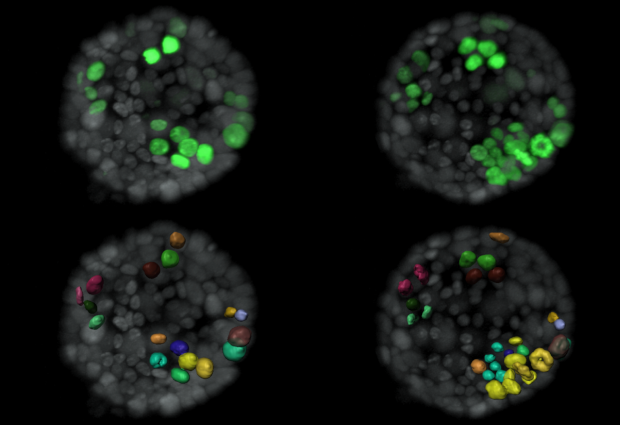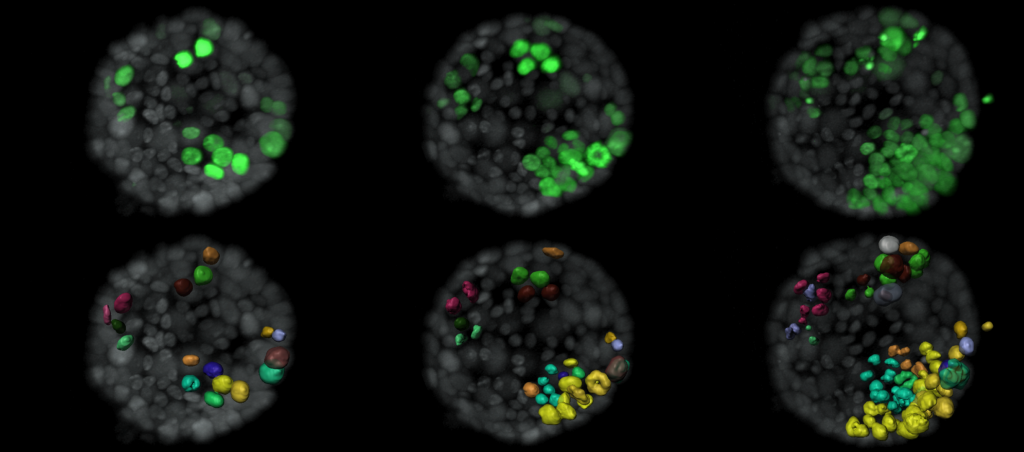
Tumour takeover

Breast cancer is the second leading cause of cancer-related deaths in women. It is so deadly because tumours often return after successful cancer treatment. This recurrence is caused by individual dormant cancer cells remaining inside the breast. These cells can develop into active cancer cells months or years after recovery.
To study breast cancer, researchers are using mice, and also their cells grown outside the body. So-called ‘organoids’ are mini organs that are grown from stem cells or body tissue. The advantages of these organoids are that they can be easily manipulated and characterised.
This image, taken by Ashna Alladin in the Jechlinger group at EMBL Heidelberg, shows a mouse breast organoid. Some of its cells (green) were turned into cancer cells by transferring a cancer-inducing gene into them. Healthy cells appear in grey. Looking at the pictures from left to right, it is possible to see how the cancer cells proliferated over the course of a few days. To track the growth of individual cells, each cancer cell in the first row was given a different colour – which is visible in the second row. The offspring of these cells were labelled using the same colour. Thus, it is possible to see how many new cancer cells were derived from a mother cell in a certain time period, and in which direction they grew.
The image was produced using selective plane illumination microscopy (SPIM).

If you have a stunning picture of your science, your lab or your site, you can submit it to mathias.jaeger@embl.de.


